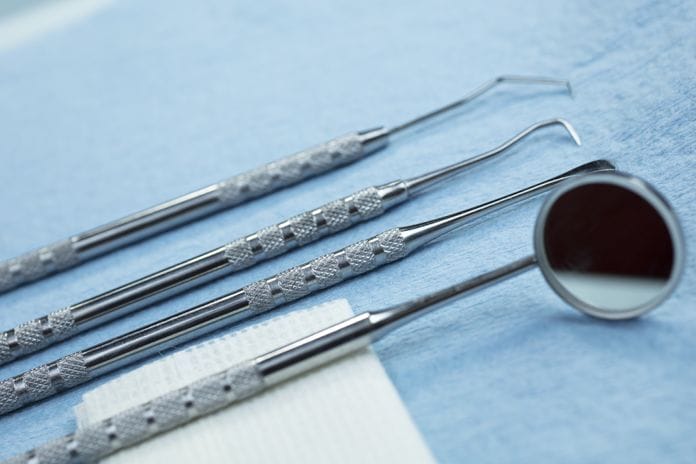Every hygienist can remember the first day they got their shiny, new instruments. Each instrument came with a clear purpose, a goal. There were so many and each one needed to be unwrapped, labeled, and properly sterilized. It was exciting to finally get the tools of the trade necessary to fight against periodontal disease. At the time, none of us ever thought about maintaining the edge of the blade, let alone how to go about sharpening it.
The Importance of Sharpening Instruments
However, with each patient, it became more and more important to sharpen and inspect the edge to make sure it was still working effectively. Not only is doing so a necessity but something which should be carried about by the clinician often, to ensure the proper, final result. If this is overlooked, the office suffers from hygiene appointments taking entirely too long, thus affecting the schedule, and hygienists suffering from the muscle fatigue of repetitive strokes, which can eventually lead to carpal tunnel syndrome or other musculoskeletal injuries in the long run.
When instruments are not sharpened by the operator, there is no way to guarantee the effectiveness of the blade or stroke. Ultimately, only the hygienist can test the blade quality during the cleaning due to the amount of buildup that is removed. I will never forget working in a family practice that was co-run by a husband and wife, both dentists, and only the wife was allowed to sharpen the hygiene instruments. Her reasoning behind this was to reduce instruments breaking, due to over sharpening. However, the truth was, she simply wanted them sharpened just enough to allow us to do our job, yet not enough to do it effectively. This allowed her to put off replacing dull instruments and reduced the cost of purchasing new ones. Depending on the number of patients seen, the severity of cases, and number of instrument set-ups, stainless steel instruments have a lifespan of only 6-18 months, yet this high-volume office would only purchase new instruments every 3-5 years at best. Ours were long overdue to be replaced, and because of this, we relied heavily on ultrasonics and fine-scaled with multi-packs of newly sharpened instruments during the day. Despite this, we were still determined to provide platinum dental care to our patients and did our best to do so, even if we weren’t in charge of our own instruments.
Not having the properly-maintained instruments can also slow down schedules. With hygiene schedules wildly ranging anywhere from 30 minutes to an hour for an adult prophy, you have to do the most with the time you’re allotted. Now if you’re fortunate enough to be in an office that schedules time for an SRP based on the severity of disease and patient need, and not the general standard of time for the procedure, that is a great office. My belief has always been, it takes as long as it takes and you can’t rush quality care! Most quality dentists I’ve worked with throughout my career agreed with this and gave me the time I needed. Sadly, not all of us are in such a position, and we are often forced to scale away with the dull, worn out instruments we’re given, hoping to still meet our deadlines. The message here is that quality care cannot be provided with subpar instruments.
Injury to Hygienists
Lastly, blunt instruments can cause muscle fatigue, later transitioning into carpal tunnel or other musculoskeletal disorders due to the repetitive motion of strokes during cleanings. If you ask any seasoned hygienist what their secret to career longevity is, a popular answer is usually, “My instruments and equipment.” Seguing off of that point, the average freshly sharpened instrument’s edge begins to dull after 15 strokes. Not to say that anyone needs to keep count of your number of strokes, however, it goes to show how critical it is to routinely sharpen instruments when they’re dull, and replace them when they’re past their prime.” Hygienists love their jobs and want to deliver excellent patient care, but if they don’t have the proper equipment, an injury to a hand or wrist during their career is not unforeseeable. I have met several who suffer from carpal tunnel, and the pain is evident on their faces. Some even wear support wrist braces on a weekly basis to provide some level of comfort due to workplace injuries. Luckily, this can all be prevented, and hopefully, more dentists out there will work towards doing so.
Sharpening instruments should be a professional right as a dental hygienist because when it is left up to someone in the office beside the clinician, or the clinician not be given the time to do so, the consequences can negatively affect daily schedules and cause debilitating injuries. If you don’t have control over your instrument maintenance, you should possibly consider choosing another office, or at the very least, bring the seriousness of the issue up with the office manager or doctor. Sometimes bringing issues to light and saying something can make a real difference.
SEE ALSO: Ask Kara RDH: How Often Should I Sharpen My Instruments
DON’T MISS: Ergonomics: If I’d Only Known












